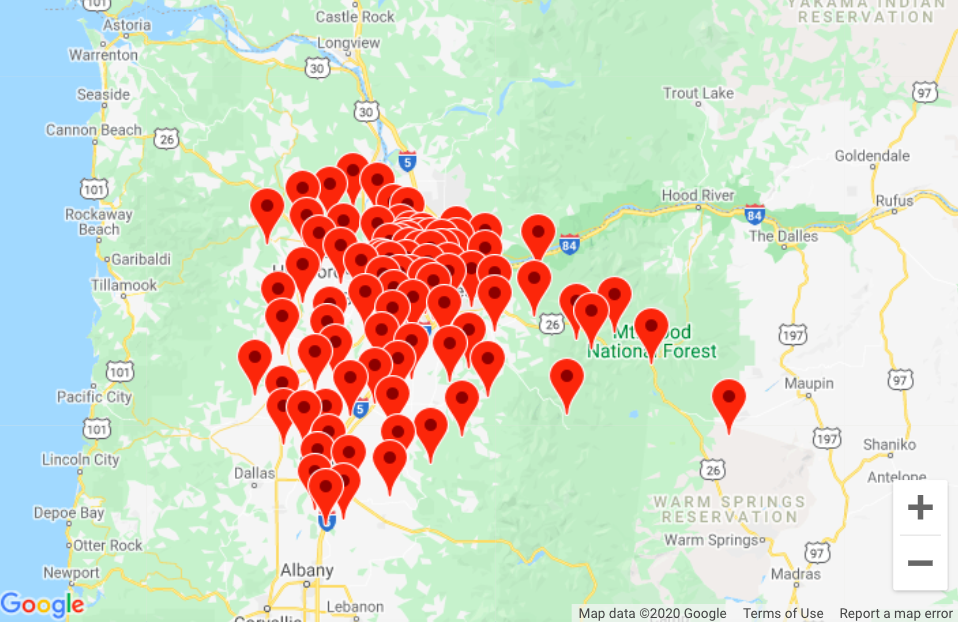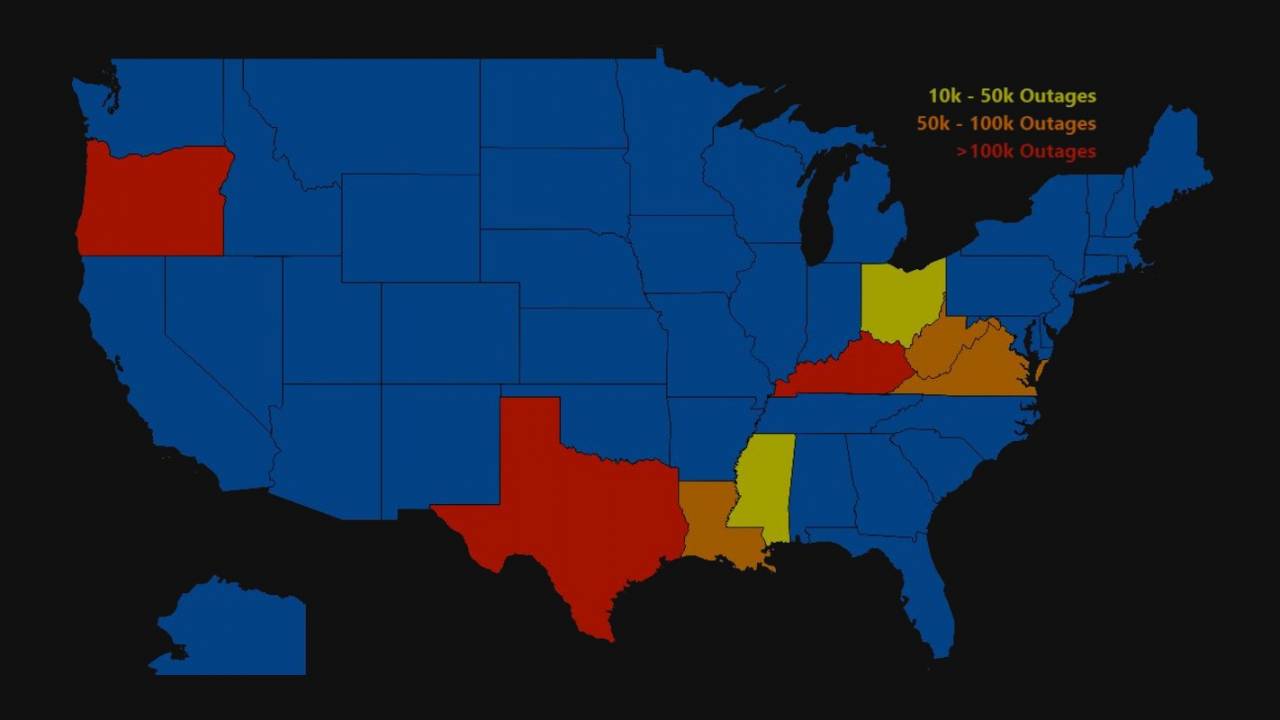As power outages become increasingly frequent in the region, understanding their root causes, impacts, and preventive measures is more important than ever. Factors such as aging infrastructure, extreme weather, and growing energy demands contribute to these disruptions, which can significantly affect daily life, businesses, and the economy. This guide aims to provide you with comprehensive insights and practical advice to help you stay prepared.
With climate change intensifying and reshaping our environment, the frequency and severity of power outages are expected to rise. This trend poses challenges for individuals and communities, making it crucial to gain a deeper understanding of the issue. In this article, we will explore the various causes of power outages, their effects, and strategies to mitigate their impact.
This guide is designed to equip you with actionable insights and expert advice on managing power outages in your region. By the end of this article, you will have a solid foundation of knowledge to handle such situations effectively and ensure the safety and well-being of your household or business.
Read also:Marcus Freemans 2024 Salary A Comprehensive Analysis
Table of Contents
- Key Causes of Power Outages in the Region
- Different Types of Power Outages
- The Impact of Power Outages on Daily Life and Businesses
- Effective Measures to Prevent Power Outages
- Preparing for Emergencies During Power Outages
- The Role of Technology in Managing Power Outages
- Power Outage Statistics You Need to Know
- Regional Variations in Power Outage Management
- The Future of Power Grids and Outage Prevention
- Conclusion and Next Steps
Key Causes of Power Outages in the Region
To effectively address power outages, it's essential to first understand the underlying causes. Various factors, both natural and man-made, contribute to these disruptions, and their impact can vary depending on the region and infrastructure conditions.
Extreme Weather Events
Severe weather conditions, such as storms, hurricanes, heavy snowfall, and high winds, are among the leading causes of power outages. These events can cause significant damage to power lines, transformers, and other critical infrastructure components. For instance, the U.S. Department of Energy reports that severe weather is responsible for approximately 68% of all power outages nationwide.
Deteriorating Infrastructure
Many regions rely on power grids that were constructed decades ago and are now struggling to meet the demands of modern energy consumption. This aging infrastructure is more susceptible to failures, especially during periods of peak usage. Investing in upgrades and modernizing these systems is critical for reducing the frequency of outages.
Human Error and Deliberate Sabotage
Although less common, human error and intentional sabotage can also lead to power outages. Mistakes during maintenance or deliberate damage to equipment can result in widespread disruptions. Ensuring proper training and implementing robust security measures can help mitigate these risks.
Different Types of Power Outages
Power outages come in various forms, each with distinct characteristics and implications. Identifying the type of outage you're experiencing can help you respond more effectively.
Brownout
A brownout occurs when there is a temporary reduction in voltage, causing lights to dim and electronic devices to malfunction. This type of outage is typically caused by overloaded circuits or insufficient power supply. While less severe than a blackout, brownouts can still cause damage to sensitive electronics.
Read also:Exploring The Artistry And Impact Of Travis Jodis Photography
Blackout
A blackout represents a complete loss of power over a specific area. These outages can last from a few minutes to several days, depending on the severity and cause. Blackouts are often the result of major system failures or natural disasters, and they can have significant impacts on daily life and businesses.
Rolling Blackouts
Rolling blackouts are planned outages implemented by utility companies to manage electricity demand during peak usage periods. These outages are typically scheduled and rotate through different areas to prevent a total grid collapse. While inconvenient, rolling blackouts are a necessary measure to maintain grid stability.
The Impact of Power Outages on Daily Life and Businesses
Power outages can have far-reaching effects on both individuals and businesses. From disrupting daily routines to causing financial losses, the consequences of these events are significant.
Impact on Households
- Loss of refrigeration, leading to spoiled food and potential health risks.
- Inability to use essential appliances, such as water heaters, air conditioners, and medical devices.
- Communication disruptions due to the lack of internet and phone service, making it difficult to stay connected with loved ones.
Impact on Businesses
- Loss of productivity and revenue due to halted operations.
- Damage to equipment and data loss, which can have long-term implications for business continuity.
- Increased operational costs associated with backup power solutions, such as generators and battery systems.
Effective Measures to Prevent Power Outages
While some causes of power outages are beyond our control, there are proactive steps individuals and communities can take to reduce their likelihood and impact.
Regular Maintenance and Upgrades
Ensuring that power lines and equipment are regularly inspected and maintained is crucial for preventing failures. Utility companies should prioritize upgrading aging infrastructure to improve reliability and reduce the frequency of outages. This investment can lead to long-term savings and enhanced grid performance.
Smart Grid Technology
Implementing smart grid technology can significantly enhance the efficiency and resilience of power systems. These advanced grids use sensors and communication systems to detect and respond to outages more quickly, minimizing downtime and improving customer satisfaction.
Preparing for Emergencies During Power Outages
Being prepared for a power outage is essential for ensuring your safety and comfort during such events. Here are some practical tips for emergency preparedness:
Create an Emergency Preparedness Kit
- Flashlights and extra batteries to ensure you have light during the outage.
- Non-perishable food and bottled water to sustain you and your family for several days.
- Portable chargers for electronic devices, allowing you to stay connected and informed.
Develop a Communication Plan
Establish a clear plan for staying in touch with family members and emergency contacts during an outage. Consider using text messages or social media as alternative communication methods, as phone lines may be congested.
The Role of Technology in Managing Power Outages
Advancements in technology are revolutionizing the way we manage and mitigate the effects of power outages. From smart meters to renewable energy solutions, these innovations are transforming the energy landscape.
Smart Meters
Smart meters provide real-time data on energy usage and can alert utility companies to outages more quickly. This enables faster response times and more efficient repairs, reducing the duration and impact of outages.
Renewable Energy Solutions
Incorporating renewable energy sources, such as solar and wind power, into the grid can reduce reliance on traditional power plants. This diversification enhances grid resilience and reduces the likelihood of outages, contributing to a more sustainable energy future.
Power Outage Statistics You Need to Know
Data and statistics provide valuable insights into the prevalence and impact of power outages. Here are some key figures to consider:
- In 2021 alone, the United States experienced over 1,400 major power outages, affecting millions of people nationwide.
- The average duration of a power outage in the U.S. is approximately 4 hours, although some events can last much longer, especially in rural areas.
- Power outages cost the U.S. economy an estimated $150 billion annually, highlighting the economic importance of addressing this issue.
These statistics emphasize the urgency of investing in reliable energy infrastructure and adopting innovative solutions to minimize the impact of power outages.
Regional Variations in Power Outage Management
Power outage management can vary significantly across different regions due to differences in infrastructure, climate, and regulatory policies. Understanding these variations can help tailor solutions to meet specific needs.
Urban vs. Rural Areas
Urban areas often benefit from more advanced infrastructure and faster response times, while rural areas may experience longer outages due to limited resources and greater distances for repairs. Bridging this gap is essential for ensuring equitable access to reliable power.
Climate Considerations
Regions with extreme weather conditions, such as hurricanes or snowstorms, require specialized equipment and contingency plans to handle outages effectively. Tailoring strategies to specific climatic challenges can improve resilience and reduce downtime.
The Future of Power Grids and Outage Prevention
The evolution of power grids is driven by advancements in technology and the increasing demand for sustainable energy solutions. As we look to the future, several trends are likely to shape the landscape of power outage management.
Decentralized Energy Systems
Decentralized systems, such as microgrids, offer a more resilient alternative to traditional centralized grids. These systems can operate independently during outages, ensuring continued power supply to critical facilities such as hospitals and emergency services.
Artificial Intelligence and Machine Learning
AI and machine learning are being used to predict and prevent outages by analyzing vast amounts of data and identifying potential issues before they occur. This proactive approach can significantly reduce downtime and enhance grid reliability.
Conclusion and Next Steps
Power outages remain a significant challenge in the region, but with the right knowledge and preparation, their impact can be minimized. By understanding the causes, effects, and preventive measures, you can take steps to protect yourself and your community from these disruptions.
We encourage you to share this article with others and leave a comment below with your thoughts or experiences related to power outages. Additionally, explore other resources on our site to learn more about energy management and sustainability. Together, we can work toward a more reliable and resilient energy future for everyone.


